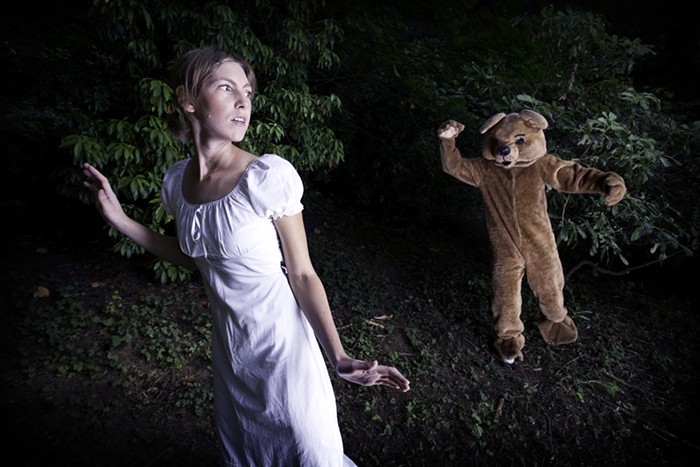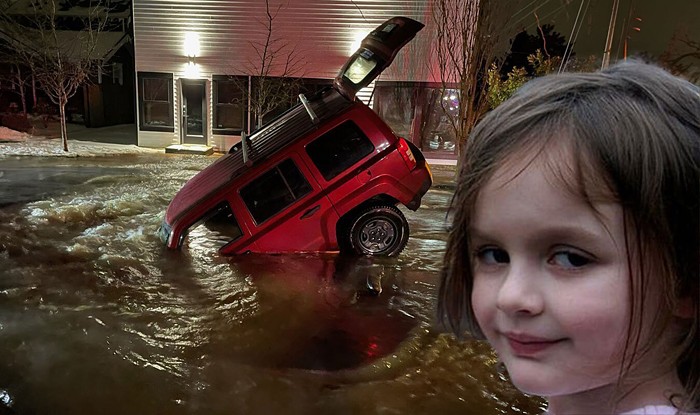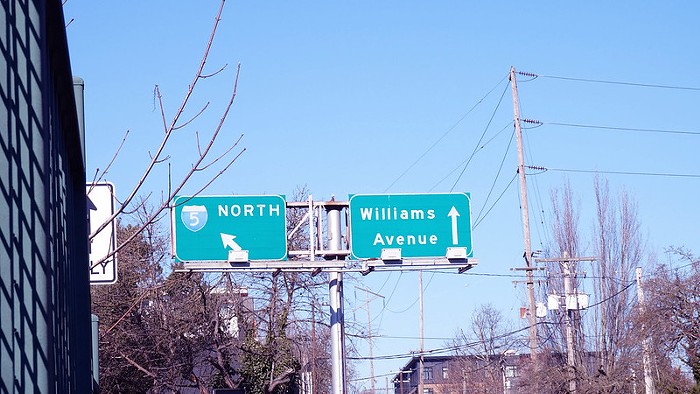The first installment of the Cooley Gallery's survey of Michael and Judy Ovitz's collection of contemporary art was teeming with more than 30 works by a diverse range of artists. But New Trajectories II is much more streamlined, with just nine works by two internationally renowned photographers, Candida Hofer and Gregory Crewdson. Hofer, a student of the German photographers Bernd and Hilla Becher, is known for her portraits of unpopulated interiors, such as "Bank Nurnberg," which depicts a wall of gleaming safety deposit boxes. In "Bank Nurnberg" and her other work, Hofer emphasizes the cool geometry of the spaces she photographs, charging them with an eerily vacuous power. But with only two photographs in the show, Hofer's austere subjects pale next to Crewdson's lavishly constructed images.
Taken from his recent series, Beneath the Roses, Crewdson's work portrays subjects in the midst of a seemingly rich narrative, often at what appears to be a climactic point in the story. In "Untitled (Sunday Roast)," a mother and son sit around the dinner table, staring at a roast rather than the two table settings in front of conspicuously empty seats. Similarly, "Untitled (North by Northwest)" presents a woman who sits in the passenger seat of a sedan stalled in the middle of an intersection. The driver's side door hangs open mysteriously as she eyes the empty seat beside her.
These works initially draw the viewer in with their ornate attention to detail, dramatic lighting, and vibrant, cinematic palettes. But these images burrow into one's brain and stay there because Crewdson refuses to explain or resolve the action taking place. In other words, he gives you enough information to believe in his scenes, but too little to make any definitive sense of them. For example, his subjects all wear the same glassy expression, but what it actually says about them is hardly clear. Their blank gazes could be interpreted as looks of displacement or absence, numbed by fear or uncertainty. Then again, his subjects also appear hypnotized, as if they are transfixed on something the viewer simply cannot see or know. This technique of limiting the viewer's knowledge is disorienting and can be a little frustrating, but it's also what allows Crewdson's work to have such an arresting grip on the imagination.












